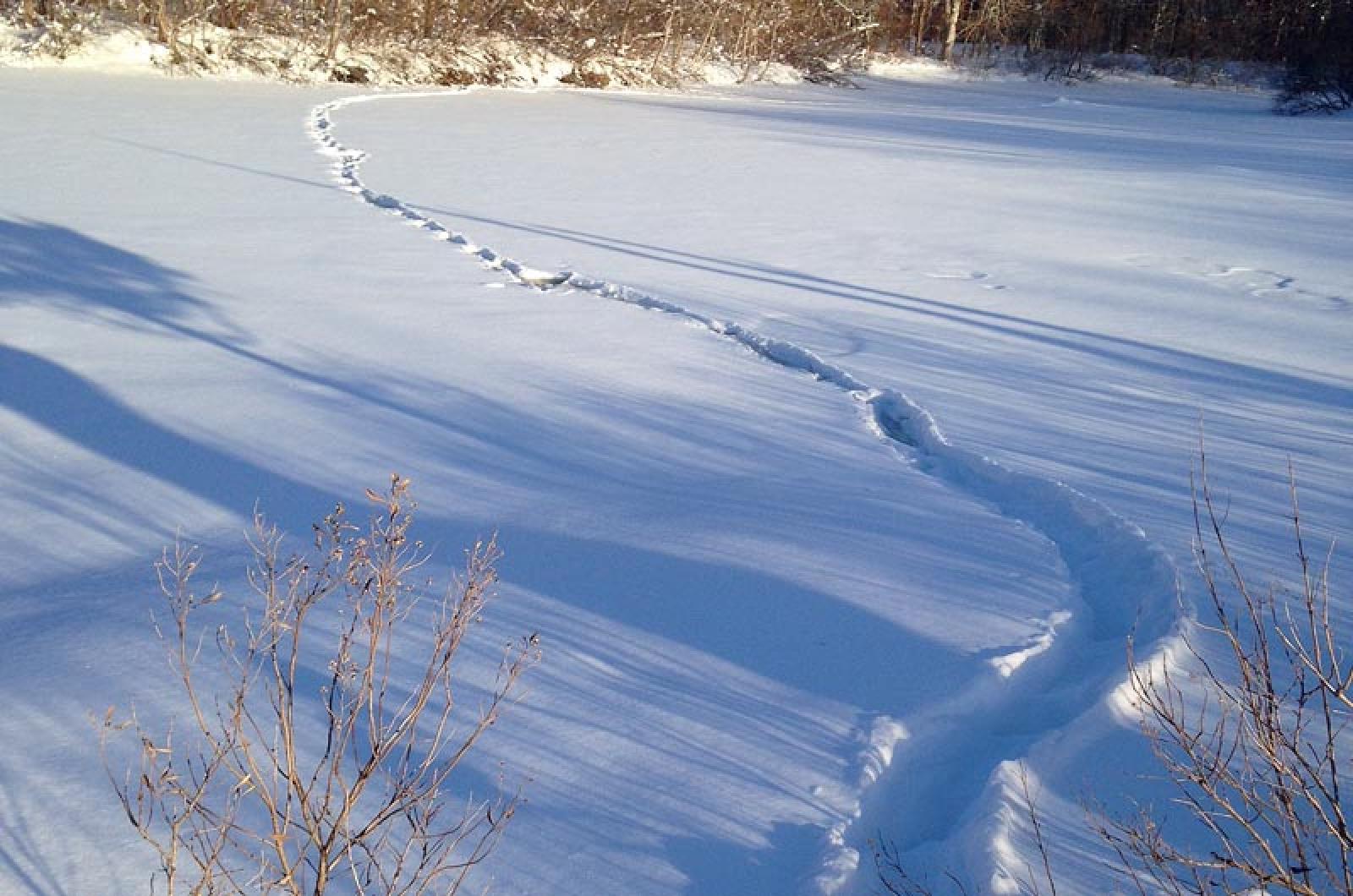Wildlife tracker Tom Brown Jr. poetically describes his passion when he observes “each day’s new landscape is like a new page, alive with the writings of animals.”
With the seemingly never-ending supply of snow on the ground (which hopefully will be gone by the time you read this), every day is a new page and an opportunity. British author, naturalist, and wildlife illustrator Ernest Thompson Seton reminds us to “Never forget the trail, look ever for the track in the snow; it is the priceless, unimpeachable record of the creature’s life and thought, in the oldest writing known on the earth.”
To read this writing, you don’t have to venture far afield. Even a walk from the house to the car provides an opportunity to observe the comings and goings of animals.
Brown tells us “everything that moves on the earth leaves a story.” This winter has given us a chance to read that story.
To begin, follow Mark Elbroch’s suggestions: in his book Mammal Tracks and Signs, he advises “You must critically observe, collect good data, and avoid rash conclusions, as well as use your imagination to interpret and celebrate the signs you’ve discovered.”
He didn’t mention good snow boots, but in my opinion, they are a must. Also take advantage of the occasion to snowshoe or cross-country ski — opportunities not available during most Martha’s Vineyard winters. However, no other special equipment besides Elbroch’s power of observation is needed to track wildlife.
When you come upon tracks, look at their size, pattern, origin and ending, and any other details that might provide hints as to who and what was there before you.
Unless you are at a farm, a hoof print seen here is likely a deer, since moose, caribou, and buffalo aren’t animals found here. Follow the tracks and discover where the deer bedded down, perhaps under a tree or bush, and note if there was more than one animal.
For non-hooved tracks, count the toes or pads and see if nails are present or absent in the print. Felines and canines have four pads, while skunks, otter, and raccoon have five. How about an opposable digit? If you see one, consider that you might be looking at a raccoon track, an animal that uses the opposing digit to help it climb.
If you see tracks that start and end at a tree, you likely have followed a squirrel. Do the tracks appear to start and end at water and include hollowed-out slides? You might be shadowing a river otter!
Observe the track pattern. Did the maker of the tracks hop, walk, gallop or bound? Two small front prints adjacent to each other and two longer back prints the same way is the signature of a rabbit.
Do you notice a tail and small prints that emerge from a hole and make a beeline to the pile of seed under the bird feeder? You might have rodent problems if you do. Look for four toes in the front track and five in the back track to confirm. Birds, too, make prints. Webbed feet could be a goose or a duck. Crows make a vertical line with three lines diverting at the top.
There is so much to learn and observe, and tracking is the only time it is perfectly acceptable to be a stalker. Don’t despair that the snow is disappearing; tracking is possible in mud, sand, clay, and dirt year round. Release your inner Sherlock Holmes, not only because it is most rewarding and fun when your deductions lead you to a new wildlife discovery, but as Paul Rezendez, tracker and author, so eloquently put it: “tracking is an educational process that opens the door to an animal’s life — and to our own.”
Suzan Bellincampi is director of the Felix Neck Wildlife Sanctuary in Edgartown, and author of Martha’s Vineyard: A Field Guide to Island Nature.




Comments
Comment policy »